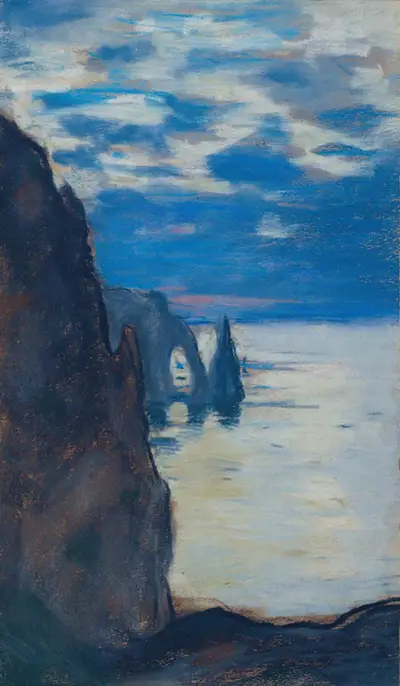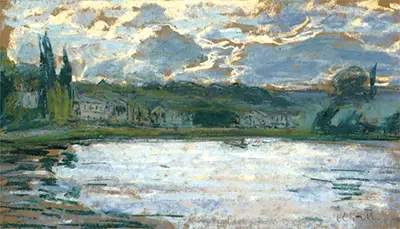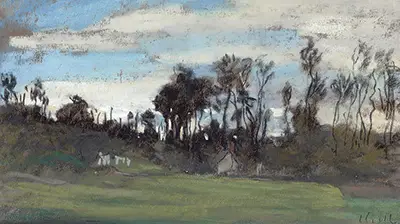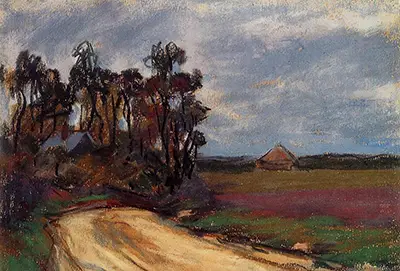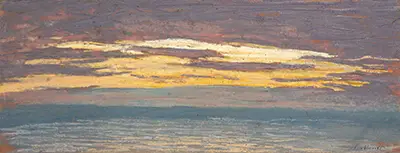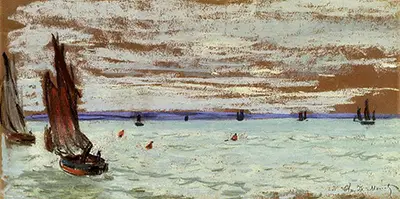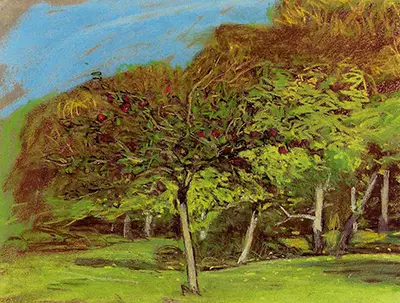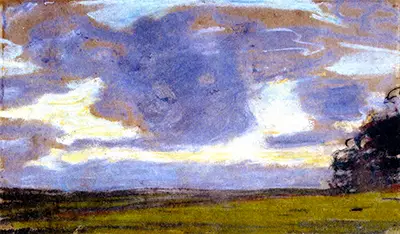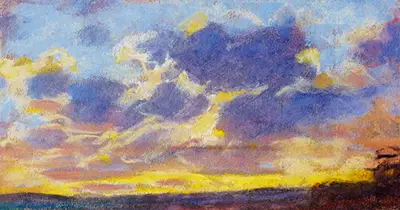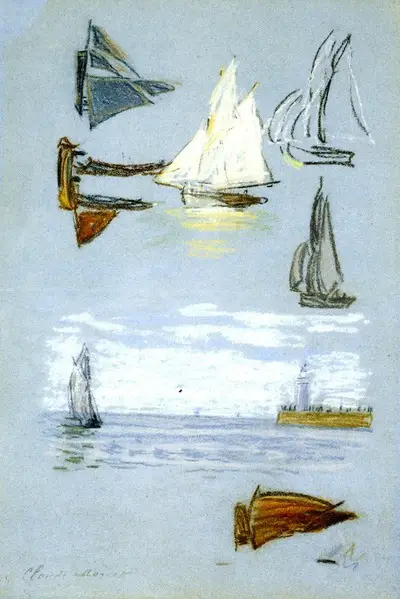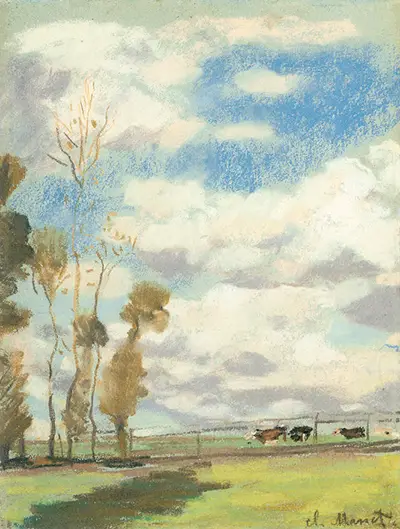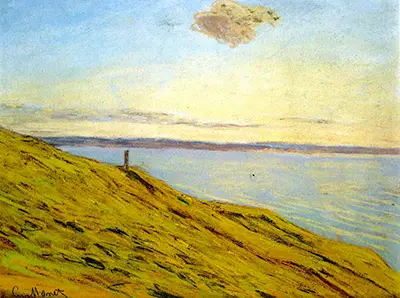The pastel medium offered the artist a way of finding a balance between the simplicity of drawing with the relatively high overhead of producing bright oil paint colours through plein air.
In a similar way to his pencil and chalk drawings, Monet's pastel work has only recently started to attract attention from researchers and followers of the artist's career.
Monet took in many different locations during his career and would often find that pastel work offered a convenient way of capturing a scene efficiently whilst on the move. The speed at which he could work with this medium meant that several different angles or spots around the same scene could be covered during a single day.
The photograph included on the left is Etretat, the Needle Rock and Porte d'Aval, circa 1885. This pastel on tan paper can be found in a private collection. The sombre colour scheme found in this artwork reminds some of the work of Edvard Munch in emotive oil paintings such as The Scream and Melancholy.
Whilst many are unaware of the significance of pastels within Monet's career, this medium was actually a part of his contribution to the very first Impressionist exhibition. These artworks were displayed between April and May 1874 on the Boulevard des Capucines. The thirty artists had complete freedom to choose their own exhibits, regardless of subject, medium or even canvas size.
Monet's pastels were generally small scale which made them useful for fitting in around the other larger scale oils on canvas. His work would sit proudly alongside the likes of Cezanne, Degas and Renoir. The exhibition took in a huge range of mediums, though the oil paintings now take the main focus of the art public. (There were also lithographs, drypoints, drawings and watercolours from this eclectic group of artists.)
The five oil paintings contributed by Monet in this exhibition have become household names, yet his pastels and other mediums have fallen into the shadows of art history. Monet would choose to leave these items only loosely titled as to the tools used but they still were included in the final exhibition catalogue.
Monet would struggle in his early days to get any artwork accepted for Parisien exhibitions, generally limited to two a time, at best. These would also always be oil paintings, with the impressionist exhibition finally offering him the flexibility that he craved.
While at work, the pastel artist uses both drawing and painting techniques in creating imagery. The pastel is a block or stick of pure pigment held together by a gum-based binder, neutral in colour. As the artist applies the medium to a surface, the pigment sticks to the grain or “tooth” of the paper and the binder evaporates. The friable nature of the medium enables the artist to create every type of impression from fine, well-defined hatches to stronger hatches, and diffuse smudges. In spite of the name “pastel”, the pigment blocks are available in every shade, from the most delicate pastels to the brightest colours and carbon browns and black. The skilled pastel artist is able to subtly blend the pigments, often with his fingers, to create a variety of tones and effects.
In use since the Renaissance, many artists used the medium to make preparatory sketches in advance of undertaking a major commission. The majority of pastel blocks did not require a mixing medium, such as water or oil, thus making the medium portable. This quality freed the artist from the confines of the studio, enabling him to paint spontaneously in the open air. By the eighteenth century, the burgeoning of foreign travel, most notably trips to the lakes and mountains of Europe, meant that aspiring amateur artists could carry pastels and board to capture the beauty of their surroundings. However, professional artists were now using pastels for major works.
Maurice-Quentin Delatour (1704-1788), became a portraitist to the French royal family and right through his career, he worked exclusively in pastels. In Self-Portrait with Lace Jabot (c.1751), Delatour used his mastery of the medium to render the delicate tints of his skin, the white tendrils of his wig and the effect of light upon the lush blue velvet of his coat. Pastel had ceased to be a medium for amateurs and executing hasty outdoor sketches. Now, it had become suitable for “high” subjects, like portraits.
Alongside the changing status of the medium, the nature of art was evolving also. Artists no longer needed commissions for portraits and historical subjects, but painted to capture impressions of the natural world. Poppies, Isles of Shoals (1891) is a beautiful, pastel rendering of a flower garden by American artist, Childe Hassam. However, pastel painting has another dimension. In works like Flower Clouds (1903), Odile Redon sought to express the inner spirit of leaves and blossoms with effusive pastel colour.
